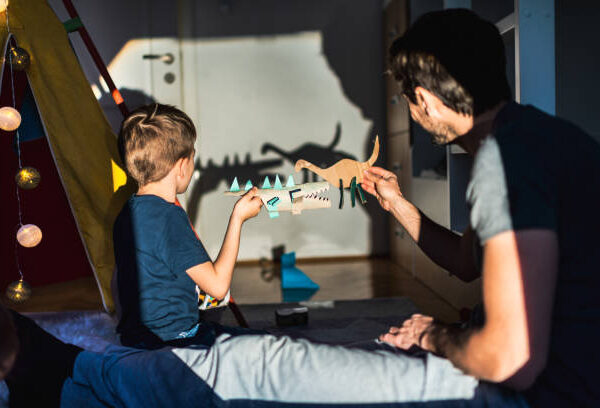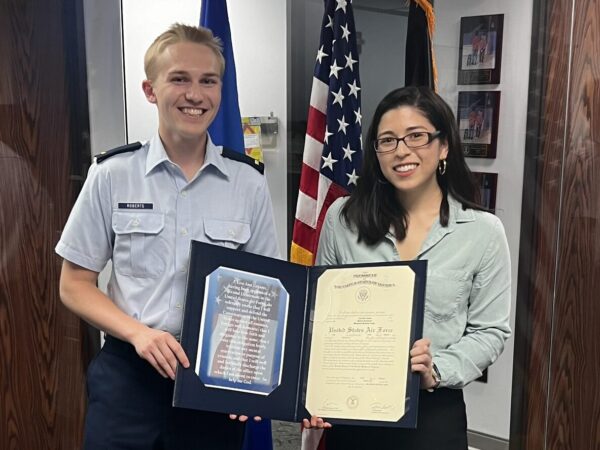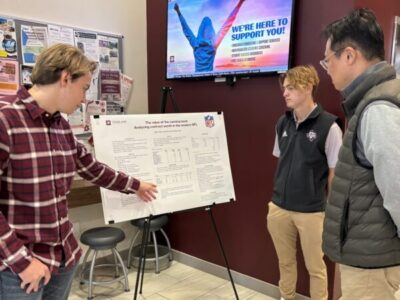June Scobee Rodgers ’83 Continues The Challenger Educational Mission
For the past 30 years, June Scobee Rodgers has dedicated her life to continuing the educational mission of the Space Shuttle Challenger crew. Rodgers, the widow of Dick Scobee, commander of the Challenger, has taught every grade from kindergarten to college. Now, her mission is preparing teachers to guide the next generation.
Rodgers comes from a difficult childhood. She grew up in a disadvantaged home and lived in a car for months at a time. Because of that, she was placed in a disadvantaged classroom. She did not let that stop her from learning. In first grade, she decided she wanted to be a teacher.
In second grade, a basket of tangerines and a book changed her life.
“We rarely had fresh fruit so I was eager to tear into those tangerines when I noticed the title of the book, “Power of Positive Thinking” by Norman Vincent Peale. And I thought Peale, just like the tangerine peels,” she explained. “The book guided me for the rest of my life. From it, I created my lifelong ABCs. A stood for attitude. B stood for believe. C stood for courage.”
Those ABCs now serve as the key piece of advice she gives teachers to keep them passionate about being in the classroom.
“Be flexible. Don’t take yourself too seriously. Be curious and creative. Focus on your students’ potential and be their champion. Make lessons relevant by tying them into their interests or current events. Laugh with them. Stay alert and vigilant, but have fun. Be serious about learning and advancing STEM careers. Find an experienced teacher to be your mentor. Strive to make a difference.”
At 16 years old, Rodgers had another life-changing experience. She was at church for a hayride when she met Dick Scobee. She graduated, they got married and they moved into a garage apartment with her brothers. She was happy because her life was finally stable.
Years later, Scobee became a pilot in the Air Force and the family moved to California. One afternoon, Scobee brought home an advertisement looking for astronauts. He applied and NASA called him for the job. The family packed up and made the move to Houston to be near the Johnson Space Center. That is when Rodgers life as an Aggie began.
She traveled from Clear Lake three days each week to attend classes, earning her Ph.D. in curriculum and instruction from Texas A&M University in 1983. During her time at Texas A&M, Rodgers found two great mentors, Dr. William Nash and Dr. William Rupley. Through their support and guidance, Rodgers developed a space science program through the Texas A&M Gifted and Talented Institute. Even after graduation, Rodgers remained active with the program.
Rodgers credits her experience at Texas A&M with giving her the courage and confidence she needed to move on following the Challenger tragedy.
“My professors gave me the skills, they gave me the background knowledge, but best of all they gave me confidence,” explained Rodgers. “They believed in me and what I wanted to do. My major professors acted as mentors.”
The year after Rodgers graduated, Dick Scobee took his first space flight. When he came home, he bypassed all of the reporters on their front lawn because he wanted her to be the first one he shared his story with. They snuck away to a restaurant and sat in a dark corner so they would not be seen.
“He used Star Trek terms to tell me what it was like. He kept stuffing his napkin under his plate at the table. When I asked him what he was doing, he said he was afraid it might float away. He was still feeling like he was in space,” Rodgers laughed. “He took out a camera to take a selfie and then dropped it to the floor. Of course that caught everyone’s attention.”
Two years after that successful mission, Scobee was selected as the commander of the “Teacher in Space Project.” A competition was held involving 100 teachers across the United States. Christa McAuliffe, a history teacher from New Hampshire was chosen and Barbara Morgan, a grammar teacher from Idaho served as McAuliffe’s backup.
Both McAuliffe and Morgan trained for a year with the other crew members. While the men would discuss simulators and flying, McAuliffe and Morgan would talk about teaching with Rodgers.
“They didn’t have the comfort level in science and math, which I had gained a bit over time. I worked with them and I worked with NASA officials to help them feel comfortable with their science experiments and activities. We became really good friends.”
After the Challenger disaster, Morgan assumed the duties of Teacher in Space Designee and spoke to educational organizations throughout the country before returning to Idaho to teach. 22 years after she began astronaut training, Morgan’s day finally came. She flew into orbit aboard the Space Shuttle Endeavour – the shuttle that was built to replace the Challenger.
Challenger Center for Space Science Education
While Morgan’s dreams to fly in space were coming true, Rodgers was celebrating the success of the Challenger Center for Space Science Education.
Just days after the Challenger tragedy, Rodgers began working with the families of the victims to create the Challenger Center. The idea for the center came when President Ronald Reagan was speaking at the Johnson Space Center. She saw the missing man formation, an aerial salute, and immediately started thinking about the educational mission of the Challenger crew.
“I watched that and I thought yes, NASA can continue the space program, but what about the crew’s mission? That’s when I bowed my head and I said ‘God, if you could help me continue the educational mission, I’ll do it. Just give me the courage to say the right words, and I’ll do it.’”
When Vice President George H.W. Bush heard about her plans, he invited her to the White House to discuss the project. He encouraged her and gave her suggestions to make the Challenger Center a reality.
Today, Challenger Learning Centers can be found on 3 continents, in 4 countries and in 27 states. Rodgers says there have been talks about an informal committee to create a Challenger Center in College Station.
“I would love to see something at President George H.W. Bush’s Library because you know how important he is to me,” she explained. “I can envision the kids flying a mission in the morning and then spending the afternoon seeing how he accomplished so much for the space program. It would be fun to see that interaction.”
About the Writer
Ashley is the Media Relations Coordinator and responsible for news coverage in the Department of Teaching, Learning and Culture as well as the Department of Educational Psychology.
Articles by AshleyFor media inquiries, contact Ashley Green.














